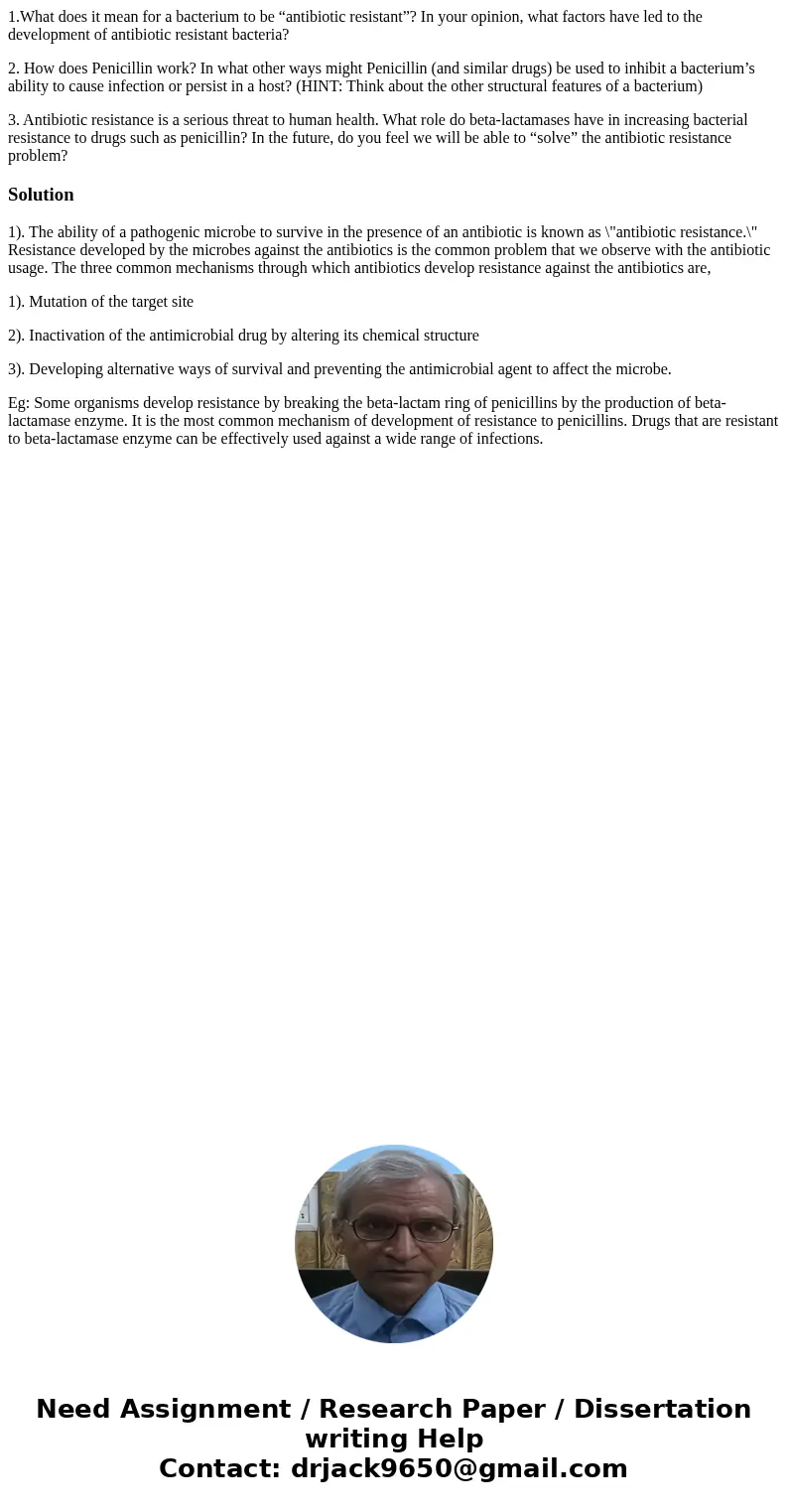1What does it mean for a bacterium to be antibiotic resistan
1.What does it mean for a bacterium to be “antibiotic resistant”? In your opinion, what factors have led to the development of antibiotic resistant bacteria?
2. How does Penicillin work? In what other ways might Penicillin (and similar drugs) be used to inhibit a bacterium’s ability to cause infection or persist in a host? (HINT: Think about the other structural features of a bacterium)
3. Antibiotic resistance is a serious threat to human health. What role do beta-lactamases have in increasing bacterial resistance to drugs such as penicillin? In the future, do you feel we will be able to “solve” the antibiotic resistance problem?
Solution
1). The ability of a pathogenic microbe to survive in the presence of an antibiotic is known as \"antibiotic resistance.\" Resistance developed by the microbes against the antibiotics is the common problem that we observe with the antibiotic usage. The three common mechanisms through which antibiotics develop resistance against the antibiotics are,
1). Mutation of the target site
2). Inactivation of the antimicrobial drug by altering its chemical structure
3). Developing alternative ways of survival and preventing the antimicrobial agent to affect the microbe.
Eg: Some organisms develop resistance by breaking the beta-lactam ring of penicillins by the production of beta-lactamase enzyme. It is the most common mechanism of development of resistance to penicillins. Drugs that are resistant to beta-lactamase enzyme can be effectively used against a wide range of infections.

 Homework Sourse
Homework Sourse